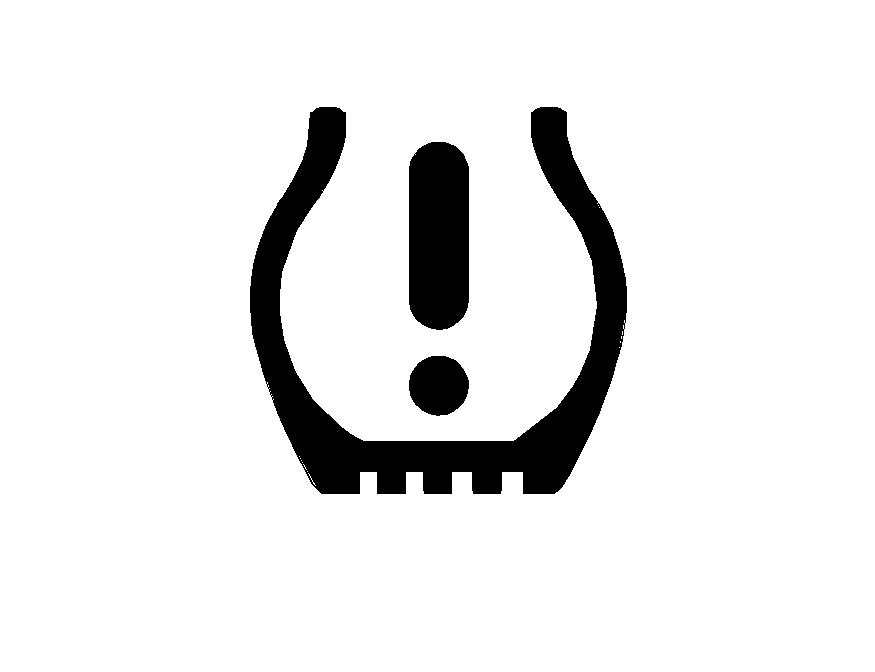Tire Pressure Monitor System CTS-V
The Tire Pressure Monitor (TPM) System uses radio and sensor technology to check tire pressure levels. If your vehicle has this feature, sensors are mounted on each run-flat tire and wheel assembly. The TPM sensors transmit tire pressure readings to a receiver located in the vehicle. Using the Message Center, tire pressure levels can be viewed by the driver. For additional information about the message center operation and displays, see Message Center .
When a low tire pressure condition is detected, a low tire warning light, on the instrument panel cluster, comes on to warn the driver.

When the tire pressure monitoring system warning light is lit, one or more of your tires is significantly under-inflated.
You should stop and check your tires as soon as possible, and inflate them to the proper pressure as indicated on the vehicle's tire information placard.
Driving on a significantly under-inflated tire causes the tire to overheat and can lead to tire failure. Under-inflation also reduces fuel efficiency and tire tread life, and may affect the vehicle's handling and stopping ability. Each tire, should be checked monthly when cold and set to the recommended inflation pressure as specified in the vehicle placard and owner's manual.
The Tire and Loading Information label (tire information placard) is attached, to either, the center pillar near the driver's door latch post or on the rear edge of the driver's side rear passenger door. The label shows the size of your vehicle's original tires and the correct inflation pressure for your vehicle's tires when they are cold. See Inflation - Tire Pressure and Loading the Vehicle for additional information.
Your vehicle's TPM system can alert you about a low tire pressure condition but it does not replace normal tire maintenance. See Tire Inspection and Rotation and Tires .
Each TPM sensor has a unique identification code that is matched to one of the four tire positions on your vehicle. Any time you rotate your vehicle's tires or replace one or more TPM sensors, the identification codes will need to be matched to the new tire and wheel position. The TPM matching process is performed in a specific sequence and time limit. See your dealer for service.
Notice: Do not use a tire sealant if your vehicle has Tire Pressure Monitors. The liquid sealant can damage the tire pressure monitor sensors.
The TPM system operates on a radio frequency subject to Federal Communications Commission (FCC) Rules and with Industry and Science Canada.
This device complies with Part 15 of the FCC Rules and with RSS-210 of Industry and Science Canada. Operation is subject to the following two conditions: (1) This device may not cause harmful interference, and (2) this device must accept any interference received including interference that may cause undesired operation of the device.
Changes or modifications to this system by other than an authorized service facility could void authorization to use this equipment.
